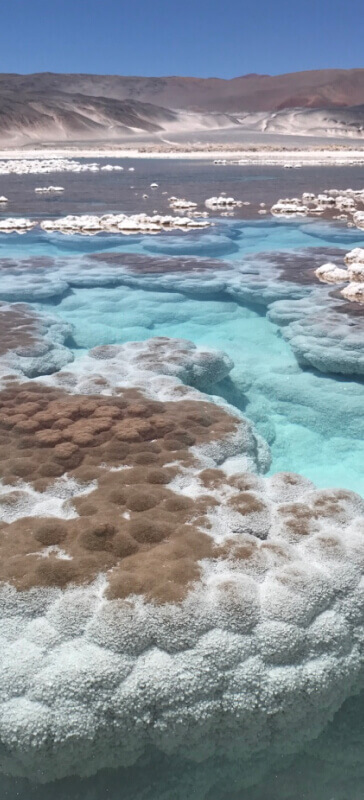

What are
extremophiles?

Living microorganisms capable of developing
under extreme conditions, where most living
things would not survive.
More than 3.5 billion years ago in primitive Earth, life was
born without oxygen, in saline alkaline water charged with
arsenic, high UV radiation, and the most extreme conditions
known until today. Living organisms that grew under those
conditions are known as extremophiles able to survive a lack
of nutrients, drought conditions, drastic temperature changes,
high salinity, and high UV radiation.

PunaBio discovery
process








The Andean Extremophiles –
PunaBio’s hidden treasure
La Puna, as it is known in Argentina, is a high-altitude
desert (+ 3500m above sea level) that covers Chile (Atacama),
Bolivia, and Perú (Altiplano). It is full of salt flats,
active volcanoes, saline wetlands, and desert soil.

It is considered one of the most extreme
places for life in the planet and resembles
the conditions of the primitive Earth that
gave rise to the first living organisms in
the planet: Extremophiles.
In addition, some of the conditions present
in La Puna, such as hypersaline cold soils,
without oxygen, also resemble the known atmosphere
of Mars, which constitutes this place as an
emblematic “lab” for the study of astrobiology
and the origin of life.


In recent years, a major breakthrough was
documented with the finding of extremophile
ecosystems called stromatolites in La Puna,
reported in 2009 by the CONICET researcher
and PunaBio Director, María Eugenia Farías.
During the last decade, the renowned biologist and her
research team has worked on the collection, isolation,
characterization and selection of these microorganisms,
gathering a unique strain collection.

The genetic study of the bacteria from
these environments has led to understanding
how specific genes generate processes that
allow plants to overcome stress conditions,
and those properties can be applied to
other crops.

Discover how we apply
extremophileknowledge
to our products
Stromatolities:
The inventors
of photosynthesis
Stromatolites are the planet’s oldest fossils.
They originated more than 3.5 billion years ago,
in primitive hypersaline seas, characterized by
high presence of arsenic and lack of oxygen.
These microbial ecosystems invented photosynthesis,
releasing oxygen and capturing carbon from the
atmosphere, transforming it into organic matter or
mineral (calcium carbonate).
It took them millions of years,
but they oxygenated the seas and
atmosphere and created the Ozone
layer, preparing the planet for
the evolution of other living
organisms including animals
and plants.


